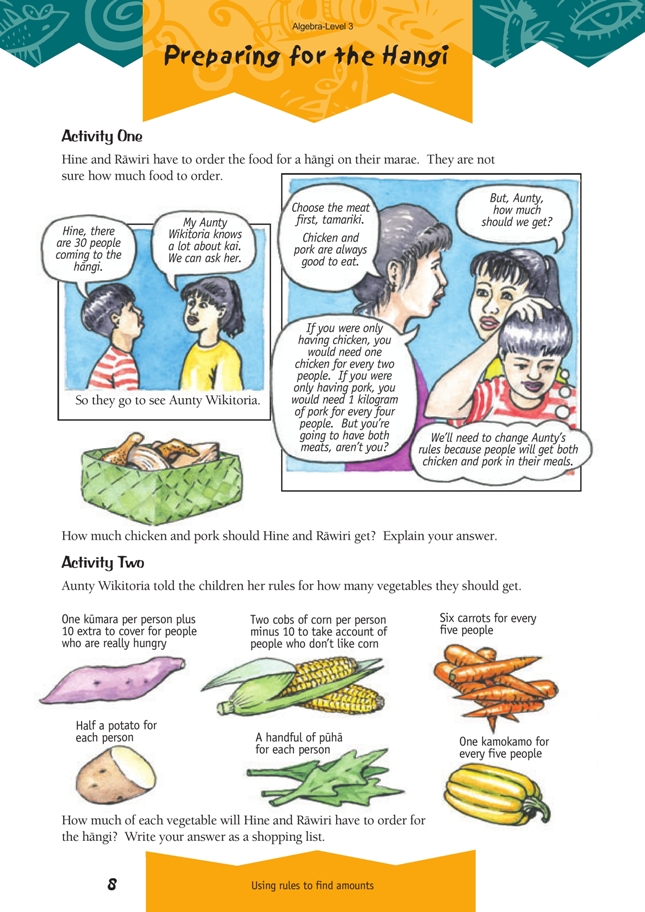This is a level 3 algebra strand activity from the Figure It Out series.
A PDF of the student activity is included.
Click on the image to enlarge it. Click again to close. Download PDF (356 KB)
use rules to find unknowns in patterns
Remind students to read and consider all the information, including that in the speech bubbles, before trying to solve the problems on this page.
Activity One
Before students begin working on this activity, you may want to discuss how to vary Aunty Wikitoria’s rules so that people get both chicken and pork. The most likely scenario is that Hine and Rāwiri need to halve the amount of chicken and pork, but you could discuss any other options that students have. When students have decided what the revised rules will be, encourage them to use division as the most efficient way to answer the question.
There are good discussion points here. Hine and Rāwiri need 7.5 chickens. Can you buy half a chicken? They need 3.75 kilograms of pork. Is it possible to buy part of a kilogram of pork?
Activity Two
Students can use algebraic symbols and equations to answer these questions. For example, to calculate how much kūmara the children need:
number of kūmara = one kūmara x number of people or
number of kūmara for n people = 1 x n.
The calculation for the number of carrots needed is slightly more complex. You might want to talk through this with students: “There are six carrots for every five people. How do we find out how many groups of five people there are?” Students can do this by dividing by five. To find out how many carrots are needed, they multiply the number of groups of five people by six:
number of carrots = (number of people ÷ 5) x 6.
If students have difficulty with this method, they could use a table or model the problem with counters or multilink cubes.
Answers to Activities
Activity One
Everybody gets an equal amount of chicken and pork. Each person would eat only half as much chicken as they would normally eat if they were served only
chicken. The same is true for the pork. So, the new rules are:
1 chicken for every 4 people and 1 kg of pork for every 8 people.
For 30 people, Hine and Rāwiri need 30 ÷ 4 = 7.5 chickens and 30 ÷ 8 = 3.75 kg pork. (They may have to buy 8 chickens.)
Activity Two Shopping list:
40 kūmara
50 cobs of corn
36 carrots
15 potatoes
30 handfuls of pūhā
6 kamokamo
